Every engine needs proper air and fuel ratio to run and function smoothly. Just like we humans need energy and food. The Mass Air Flow (MAF) sensor plays a critical role within the fuel management system to ensure the ratio is correct. It monitors the temperature and amount of air entering your engine. If the MAF sensor becomes dirty inside or begins to fail, you’ll notice issues like cranking noise while starting the engine, jerking while accelerating, rough idling, or stalling. You also may notice a decrease in fuel efficiency. For that, you’ll need to clean the MAF sensor regularly now, if you’re wondering how to clean mass air flow sensor? In this article, we’ll discuss the step-by-step process of cleaning the MAF sensor.

If the MAF sensor is at fault, cleaning it can help, and many times, even solve the problem. This can be done at home. You just to remove the component, clean it, and reattach it to your engine air intake system.
Table of Contents
What Is The MAF Sensor In Your Car?
Before discussing how to clean mass air flow sensor we’ll first discuss what is the MAF sensor? The MAF sensor is a device located between the airflow sensor and the throttle body of a vehicle. It is a part of the electronic fuel injection system of your vehicle’s mass airflow (MAF) sensor that is responsible for calculating the total amount of air entering the engine. Because a precise mixture is crucial to the efficiency and clean combustion. The MAF sensor accounts for differences in air density, which varies with temperature and altitude. A failed MAF sensor is one of many events that will trigger a check engine light. It may also result in rough running, stalling, or a drop in gas mileage.
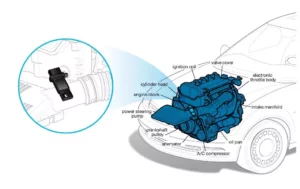
How Does The MAF Sensor Work?
Most vehicles have a hot wire MAF sensor. It has one heated wire and one ambient temperature wire. The microprocessor inside the MAF sensor measures the air entering the engine by maintaining the temperature of the hot wire 200°F above the ambient incoming air. The energy required to maintain the sensor at the same temperature is calculated and sent to the powertrain control module (PCM). The PCM then controls the injectors to deliver the specific amount of fuel that is proportional to the airflow, creating an air-fuel mixture that, ideally, is perfect for your engine.
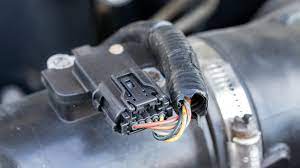
What Are The Symptoms Of Bad MAF Sensor In Car?
A contaminated or failed mass air flow sensor cannot measure the amount of airflow correctly. It causes the engine computer to miscalculate the amount of injected fuel, causing additional damage to your engine.
1. Your Car Jerks While Driving:-
A bad MAF sensor can cause your vehicle to experience poor drivability issues such as engine stalling, jerking, or hesitation during acceleration. This could happen while speeding up on the highway or cruising down a city street. These issues can create dangerous situations causing accidents and injury. If you experience any of these symptoms you should examine your vehicle as soon as possible.

2. Your Car’s Air Fuel Ration Becomes Too Lean:-
Running lean means your vehicle has too little fuel and too much air. Similar to running rich, the MAF sensor is sending inaccurate information to the PCM. Running lean for too long can seriously damage your vehicle. You may experience:
- Engine hesitation and/or surging
- Hard engine seizures
- Hard starting
- Check Engine Light
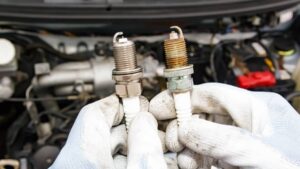
As with other MAF sensor problems, the solution for this is to clean mass air flow sensor and the wires. However, it’s also a good idea to have a mechanic check your vehicle for damage.
3. Check Engine Light On:-
A bad MAF sensor can lead to illuminating the check engine light on a car dashboard. This could be due to circuit diagnostic trouble codes. However, misfire codes and fuel trim may also lead to mass air flow sensor damage.
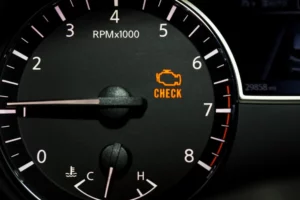
3. Poor Fuel Efficiency:-
A faulty ECM may result in the addition of excess fuel than required, which will lead to greater fuel consumption. This makes a decrease in fuel efficiency and is considered one of the symptoms of a bad MAF sensor.

5. Dark Exhaust Smoke:-
Sometimes a bad ECM can cause black smoke to come out of the vehicle’s exhaust system. A symptom of a bad MAF sensor may overload the catalytic converter as well.

6. Your Air Fuel Ratio Is Too Rich:-
Your vehicle needs the proper ratio of fuel to air in each combustion cylinder. Running rich means there is too much fuel and not enough air. Signs that your vehicle is running rich include:
- Black smoke exiting the tailpipe
- Worse fuel efficiency than usual
- Rough idling
- Check Engine Light

These issues can happen when the MAF sensor is damaged or when its wires are coated with dirt. It can’t measure airflow accurately, therefore sending incorrect information to the PCM. When it overestimates the airflow, the PCM releases too much fuel. Most of the time, you or a mechanic can fix the problem by cleaning the MAF sensor’s wires.
How Often Should You Clean The Air Flow Sensor?
It’s safe to clean the sensor every time you change the air filter. The job is simple enough to be a part of your routine maintenance. If your check engine light comes on and there’s a trouble code related to the MAF, that would be an excellent time to clean the sensor. This simple maintenance step can easily be performed in your garage whenever you have a few minutes to spare. If you’ve had your engine running or idling roughly, cleaning the mass air flow sensor can help improve your gas mileage and maintain drivability performance.
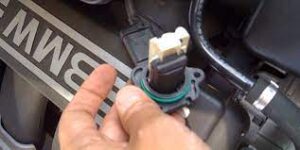
How To Clean Mass Air Flow Sensor?
If you have ruled out any issue with the intake system of your car engine and still facing symptoms, you need to clean the MAF sensor for fixing it. Below are some steps through which you can easily clean your MAF sensor:
Step 1:- Unplug The Sensor
Firstly, you need to turn off the engine and remove the keys from the ignition and let the engine cool. Locate the mass air flow sensor by consulting your owner’s manual and unplug the part from the vehicle’s electrical system.
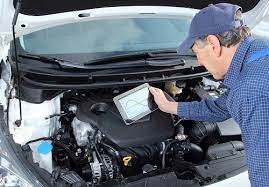
Step 2:- Remove The Sensor
Now, you need to lose the clamps and any brackets holding it in place. Slide the sensor assembly away from the tubing and carefully remove it from the air intake boots.
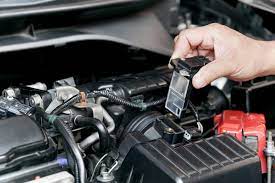
Step 3:- Clean The Sensor
Clean the sensor by placing it on a towel. Apply the cleaner and clean the sides of the part, its housing, its connectors, and its terminals. If you have a hot wire mass air flow sensor, make sure the cleaner doesn’t get onto the hot wires or plate.

Step 4:- Reattach The Sensor
Allow the sensor to dry completely. Once the part is ready, you can re-install it back into place, reattach and tighten the clamps/brackets. Once you’ve re-installed the sensor, wait a few minutes before starting the vehicle to ensure the cleaning chemicals have evaporated.
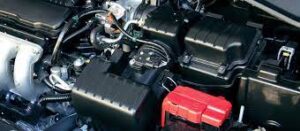
Conclusion:-
A malfunctioning MAF sensor may cause your vehicle to jerk during acceleration, run too rich, or run too lean. Make sure to fix the problem right away so you can be safe, avoid costly repairs, save money at the pump, and avoid being stranded on the road. Be sure to take a look at the mass air flow sensor before replacing it, you may only need to clean mass air flow sensor.
We hope the above-mentioned information will be helpful to all the readers. If anybody’s doubts persist feel free to comment in the comment section below. We’ll try to solve your doubts as soon as possible.



